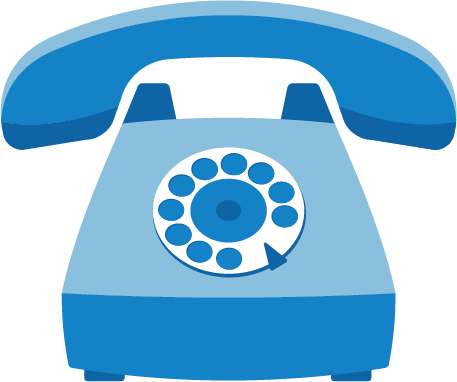[et_pb_section fb_built=”1″ _builder_version=”3.22″ custom_padding=”0|0px|0|0px|false|false”][et_pb_row _builder_version=”4.4.8″ width=”100%”][et_pb_column type=”4_4″ _builder_version=”3.25″ custom_padding=”|||” custom_padding__hover=”|||”][et_pb_image src=”https://thebenefitlink.com/wp-content/uploads/2019/09/Meds.jpg” align_tablet=”center” align_phone=”” align_last_edited=”on|desktop” _builder_version=”3.23″][/et_pb_image][et_pb_text _builder_version=”3.27.4″]
When it comes to healthcare costs, prescription drugs are a significant portion of many people’s expenses. If you’re eligible for Medicare, Part D can help you shoulder those costs.
Here’s what you need to know about the program:
[/et_pb_text][et_pb_text _builder_version=”4.4.8″ header_2_text_color=”#333″]
What is Medicare Part D?
[/et_pb_text][et_pb_text _builder_version=”3.27.4″]
Medicare Part D, also called prescription drug plans, is an optional insurance plan that helps beneficiaries pay for their meds. Unlike Original Medicare (Part A and Part B), Part D plans are sold by private insurance companies. However, all plans must follow the standard coverage set by Medicare.
Additionally every plan has its own formulary, which is basically a list of drugs that are covered by the policy. A formulary can change after you’ve enrolled in a plan. This means a drug may be added or removed from the list of what’s included in the coverage.
In case an insurance company does update its list, they’re required to notify you 60 days before that change comes into effect. This gives you time to find out if you need to switch to a different plan that covers the drugs you need or if there’s an alternative that’s still covered in your existing plan.
[/et_pb_text][et_pb_text _builder_version=”4.4.8″ header_2_text_color=”#333″]
How much does prescription drug coverage cost?
[/et_pb_text][et_pb_text _builder_version=”3.27.4″]
Part D coverage works in four stages called coverage periods. You’ll go through the deductible period, initial coverage period, coverage gap period, and catastrophic coverage period depending on how much you’ve paid for your meds over the course of the year.
[/et_pb_text][et_pb_text _builder_version=”4.4.8″ header_2_text_color=”#333″]
Deductible Period
[/et_pb_text][et_pb_text _builder_version=”3.27.4″]
This is where everyone starts each year. During this period, you’re responsible for the full price of your prescription until you reach your plan’s deductible.
[/et_pb_text][et_pb_text _builder_version=”4.4.8″ header_2_text_color=”#333″]
Initial Coverage Period
[/et_pb_text][et_pb_text _builder_version=”3.27.4″]
Once the deductible has been met, you enter the initial coverage period. Here, you’ll be paying for copayments (fixed amount) or coinsurance (percentage of the cost) instead. Whether it’ll be one or the other depends on the specific plan or drug you need to purchase.
You’ll only stay in the initial coverage period until both you and your insurance provider spend a certain amount for covered drugs. After that, you move on to the next period.
[/et_pb_text][et_pb_text _builder_version=”4.4.8″ header_text_color=”#333333″ header_2_text_color=”#333″]
Coverage Gap Period
[/et_pb_text][et_pb_text _builder_version=”3.27.4″]
In the coverage gap period (or donut hole, as it’s often called), you’ll be paying for prescription drugs yourself. That may seem like a step back, but as a Part D beneficiary, you’ll receive heavily discounted prices. As of 2019. you’ll pay no more than 25% for brand-name drugs and only 37% for generic drugs.
[/et_pb_text][et_pb_text _builder_version=”4.4.8″ header_2_text_color=”#333″]
Catastrophic Coverage Period
[/et_pb_text][et_pb_text _builder_version=”3.27.4″]
If your out-of-pocket costs reach a certain amount before the end of the year, you’re entitled to catastrophic coverage. This stage is similar to the initial coverage period—you only have to pay for a coinsurance or copayment—but this will stay in effect until the year ends.
[/et_pb_text][et_pb_text _builder_version=”4.4.8″ header_2_text_color=”#333″]
How do you enroll in Part D?
[/et_pb_text][et_pb_text _builder_version=”3.27.4″]
To qualify for Part D, you must be enrolled in Original Medicare or a Medicare Advantage plan (Part C).
Like other parts of Medicare, you can enroll in a Part D plan during the Initial Enrollment Period (IEP). This starts three months before the month of your 65th birthday and lasts for seven months. During this time, you can enroll through an insurance company that offers Part D plans.
If you miss the IEP, you can still get into the program during the Annual Election Period (AEP) which lasts from October 15 to December 7 of every year. This is also the window where you can make changes to your Part D plan such as switching to a different plan or dropping your coverage.
While the program is optional, unless you already have prescription drug coverage through a different health insurance plan or a Medicare Advantage plan, it’s recommended that you enroll in Medicare Part D as soon as you’re eligible. Late enrollees may face penalties in the form of higher premiums that can last as long as you have a Part D plan.
If you need help getting started, you can get in touch with one of our Medicare advocates. Here at The Benefit Link, we’re dedicated to making sure you can get the best care possible.
[/et_pb_text][/et_pb_column][/et_pb_row][/et_pb_section]



